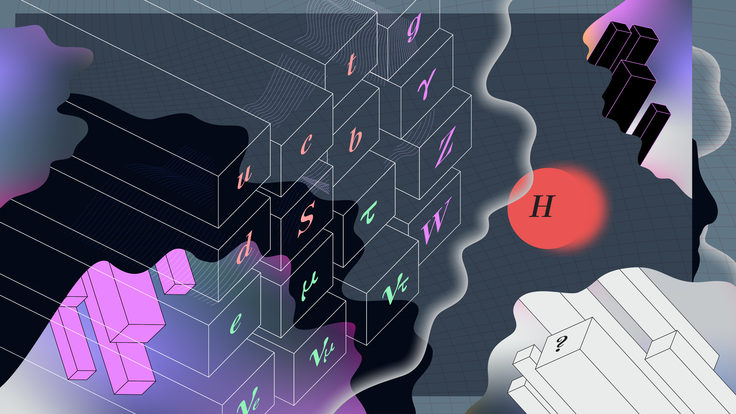The possibility that dark matter could be made of heavy, strongly interacting particles has been ruled out by neutrino observations at the IceCube detector, according to physicists Ivone Albuquerque of Fermilab and Universidade de São Paulo and Carlos Pérez de los Heros of Uppsala University.
Although the majority of physicists favor models of dark matter that only rely on weakly interacting massive particles, or WIMPs, some theoretical models allow for strongly interacting massive particles, or SIMPs. Massive versions of each of these particles are whimsically referred to as wimpzillas or simpzillas.

Prior to this study, this plot represents the excluded types of simpzilla based on mass and interaction strength. The colored regions are all excluded by experiment with just the white triangles remaining as possible types of SIMPs.

Like the other plot, this shows the SIMP types ruled out but with new data added. It cuts out the white triangles, leaving only a patch in the lower right, which does not correspond to any favored theories as the dark matter would be too massive.
During recent years, a range of underground and space-borne experiments have ruled out various combinations of interaction strengths and masses for dark matter particles, but there had always been a few openings left for particles of just the right combinations of interaction strength and mass.
If simpzillas did exist, they would become captured by the gravity of massive objects such as the Sun. Then they would bump into each other, lose energy, and accumulate near the center of the Sun where they would annihilate, giving off neutrinos. Those extra neutrinos should be detectable by a neutrino telescope such as IceCube in Antarctica. Using data collected from 22 strings of IceCube's optical modules, a fraction of the 80 strings that make up the entire detector, the physicists determined there was no excess of neutrinos coming from the Sun with enough confidence to rule out the existence of simpzillas.
The paper concludes, “…strongly interacting heavy relics from the early universe can only account for the dark matter if they have masses above 1015 GeV. As these ultra heavy masses are not currently favored by any model, the window for simpzillas as the only component of dark matter can be closed.”






